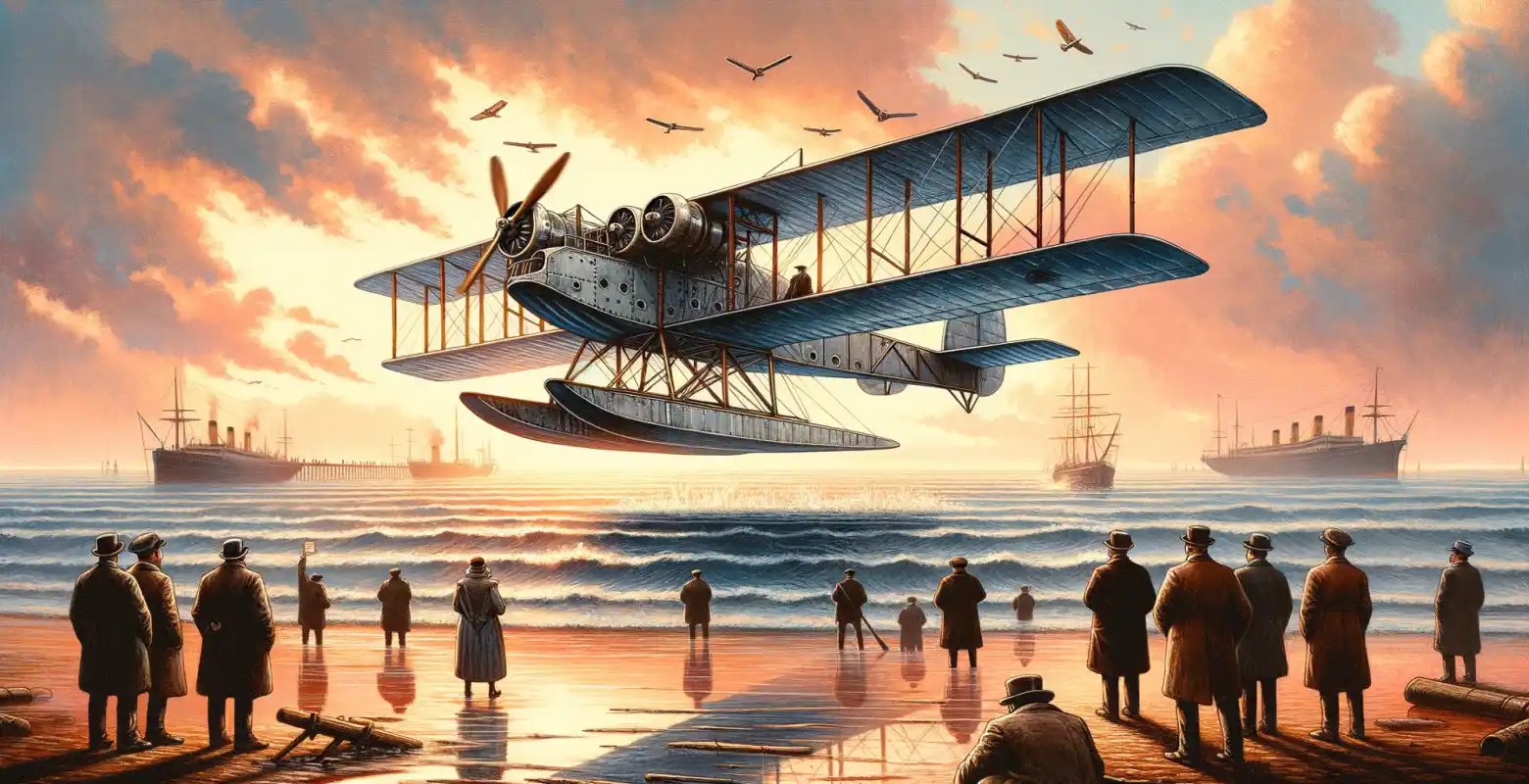What did the first transatlantic flights look like?
Introduction
The first transatlantic flights were a milestone in the history of aviation and international communication. Crossing the Atlantic by air was once a dream that many considered unattainable. Today, it is a commonplace occurrence, but it is worth reminding ourselves of how the beginnings of this extraordinary part of aviation history looked. In this post, we will take a closer look at how the first transatlantic flights were, what challenges they faced, and how they influenced the future of air travel.
First Attempts and Pioneers of Transatlantic Flights
The beginning of the 20th century was a time of dynamic development in aviation technology. The first attempts to cross the Atlantic by plane were made as early as the 1910s, but it was Alcock and Brown's flight in 1919 that was recorded as the first uninterrupted crossing of the Atlantic Ocean. Using the Vickers Vimy biplane, they took off from Newfoundland in Canada and landed in Ireland, covering a distance of about 3,000 kilometers.
This flight lasted just over 16 hours and was groundbreaking due to the lack of stops along the way. Alcock and Brown had to face many challenges, such as bad weather, icy temperatures, and navigation problems. Their success opened a new chapter in aviation history, showing that the Atlantic could be crossed by air.
Commercial Flights and Technological Development
Following Alcock and Brown's success, the next step was to launch regular commercial flights. The first of its kind service was carried out by the German airline Lufthansa in 1938 using the Focke-Wulf Fw 200 Condor aircraft. Although this flight involved stops, it marked the beginning of regular passenger flights across the Atlantic.
In the 1930s and 1940s, aviation technology was advancing rapidly. New aircraft models, such as the Boeing 314 Clipper, were able to cross the Atlantic with more passengers and greater comfort. The Clipper, which was a flying boat, could accommodate dozens of passengers and offered luxurious amenities such as sleeping cabins and a restaurant on board.
Challenges of the First Transatlantic Flights
The first transatlantic flights were associated with many challenges. Primarily, these were technical issues such as engine reliability, limited range, and lack of advanced navigation systems. Navigation at that time relied mainly on star observations and simple instruments, which could lead to serious problems in bad weather.
One of the key challenges was also safety. Early aircraft were less stable and less reliable than those we know today. Flights over the ocean were particularly dangerous due to the lack of landing options in case of emergencies. This required pilots to have great courage and the ability to make quick decisions in crisis situations.
Impact on the Future of Aviation
The first transatlantic flights had a tremendous impact on the development of aviation as a whole. Above all, they inspired further research and the advancement of aviation technology, leading to the creation of more advanced and safer aircraft. They also spurred the development of airport and navigational infrastructure on both continents.
The introduction of regular transatlantic flights revolutionized the tourism industry and the economies of countries on both sides of the Atlantic. It enabled faster and more efficient transportation of people and goods, reducing travel time from weeks to just a few hours.
Future of Transatlantic Flights
Today, transatlantic flights are a standard, and aviation technology continues to evolve. The introduction of new, more environmentally friendly aircraft, such as the Boeing 787 Dreamliner and Airbus A350, allows for even more efficient and environmentally friendly crossings. In addition, work on hypersonic aircraft could potentially shorten the flight time across the Atlantic to just a few hours in the future.
Innovations in aviation, such as automation and artificial intelligence, promise further increases in passenger safety and comfort. With the advancement of technology and growing passenger demands, transatlantic aviation remains one of the most dynamic areas in the aviation industry.
Summary
The first transatlantic flights were not only a technological feat but also a symbol of human determination and the pursuit of pushing boundaries. They laid the foundation for today's air travel, which is an integral part of our lives. Understanding the history of these flights allows us to appreciate how far we have come and what possibilities still lie ahead. For anyone interested in aviation, the history of the first transatlantic flights is a fascinating story of innovation, courage, and a constant pursuit of progress.






Number of comments: 0